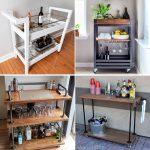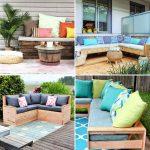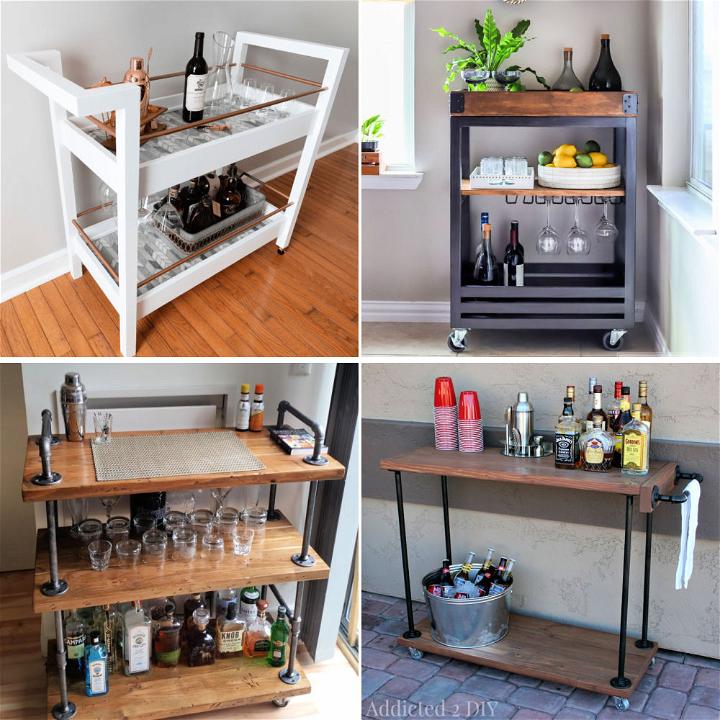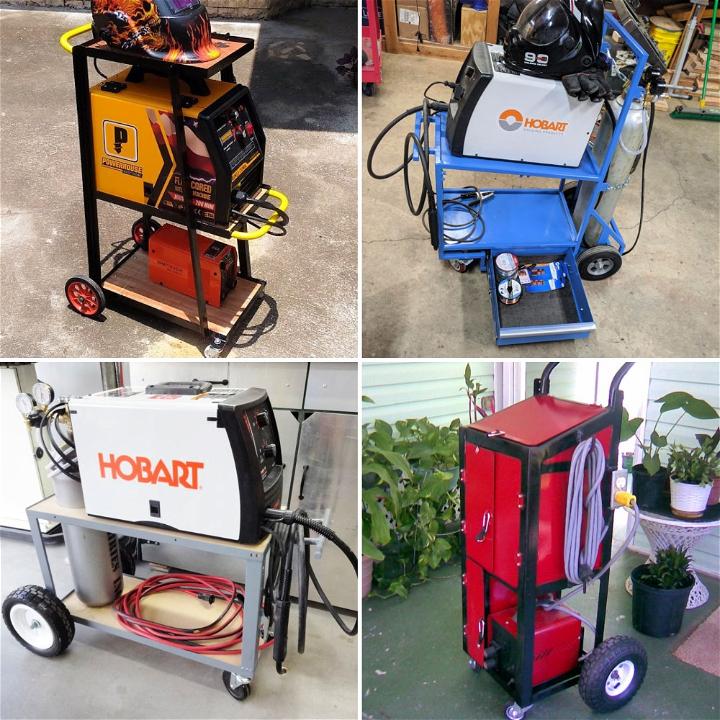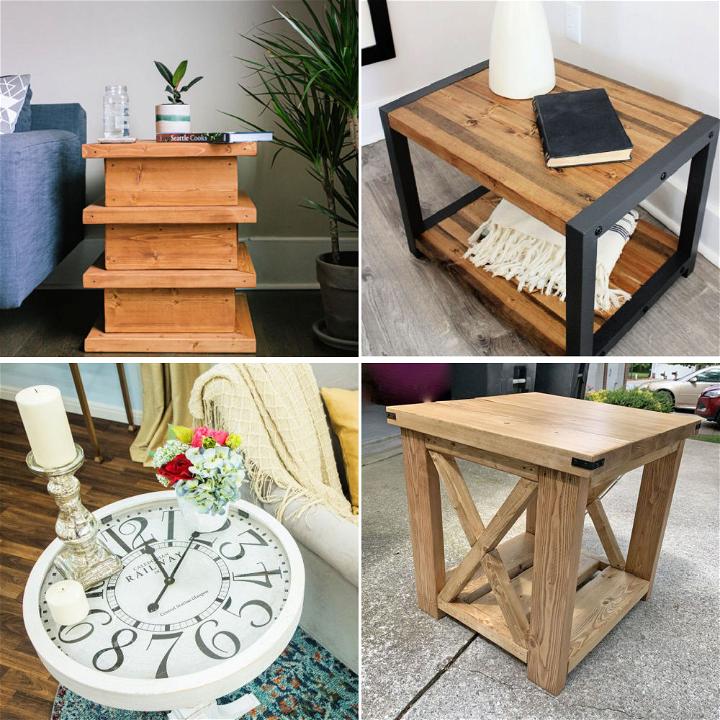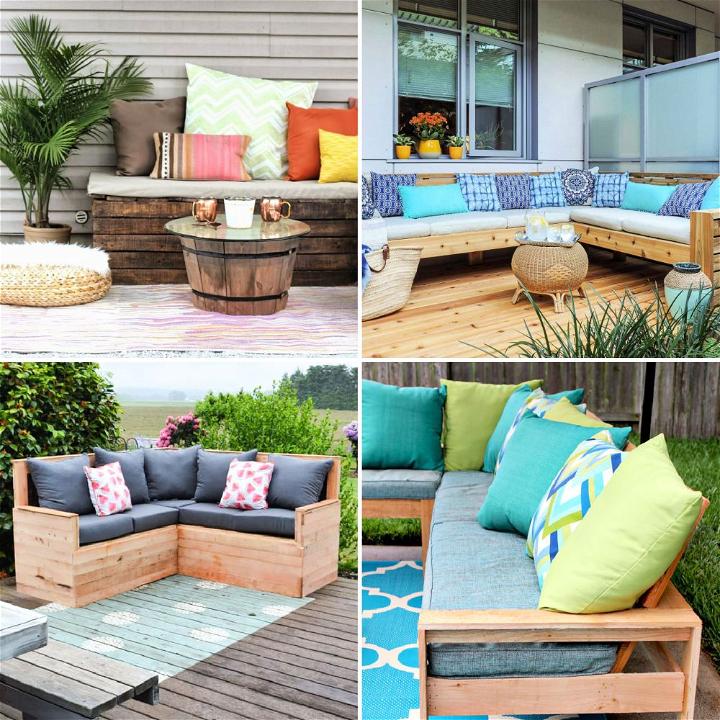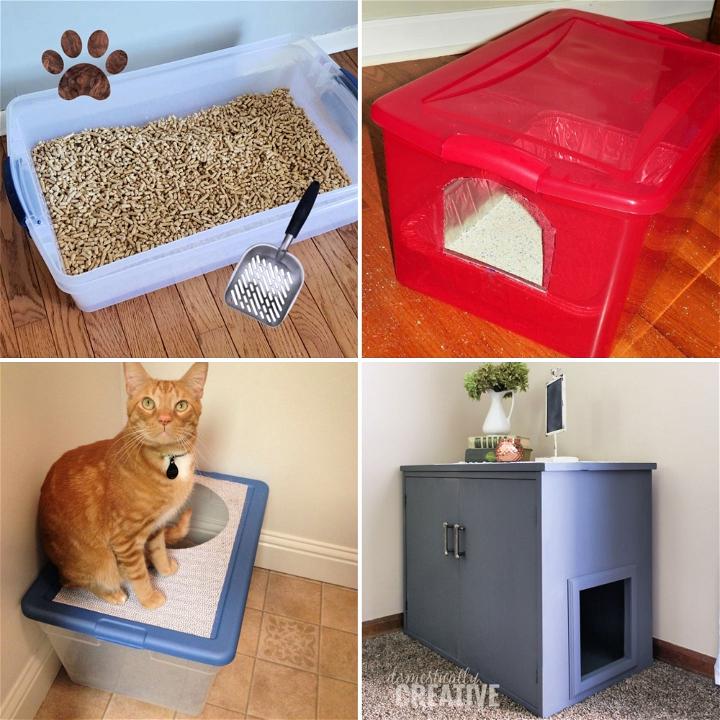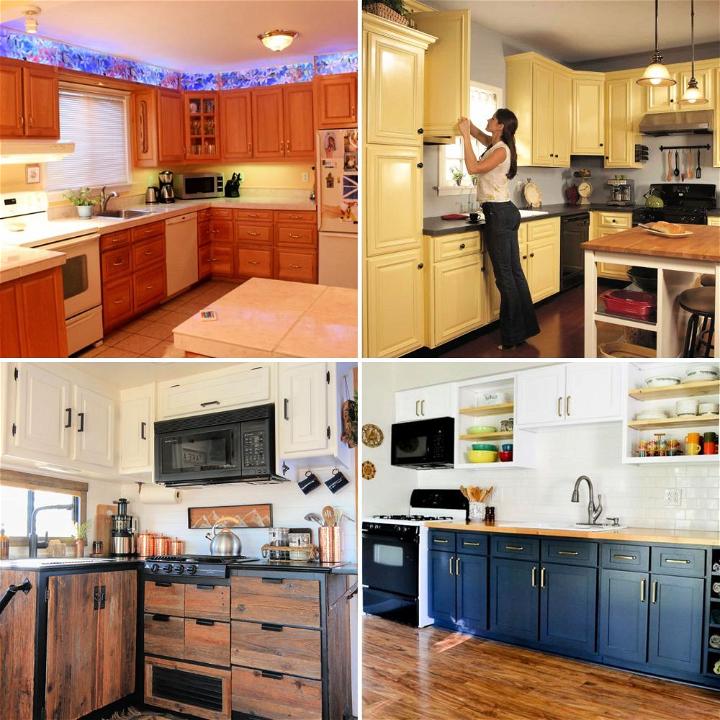Are you tired of lugging your beach gear across the sand? A beach cart can make those beach trips more enjoyable, but finding the right one can be tricky and expensive. Fear not, because building your own DIY beach cart is not only possible but can be a fun and rewarding project!

This guide walks you through making a sturdy and functional beach cart that suits your specific beach-going needs. Drawing from the firsthand experience of a seasoned DIY enthusiast from Saltwater Horizons Fishing, you'll get unique tips, tackle common challenges, and learn how to build a cart that's both cost-effective and perfectly tailored to hold everything from coolers to fishing rods.
What Will I Get Out of This?
By following this guide, you will learn how to:
- Design and build your own customized beach cart.
- Choose the right materials for durability and ease of transport.
- Solve common problems encountered in DIY cart building.
We base our instructions on reliable content from Saltwater Horizons Fishing, ensuring you get insights from an experienced builder.
Step-by-Step Guide
Learn how to build a DIY beach cart for all your beach gear with our easy guide. Includes materials list, step-by-step instructions & video tutorial.
Materials You'll Need:
- PVC pipes (1-inch schedule 40 recommended for the frame)
- PVC fittings (T-joints, elbows, etc.)
- Durable tires suitable for sand
- Axle (⅝ threaded rod)
- PVC cement (optional, for a more permanent assembly)
Tools You'll Need:
- Saw (for cutting PVC)
- Drill (with a ⅝ drill bit for axle holes)
- Measuring tape
- Wrench (for securing the axle)
Building Your Cart
- Plan Your Design: Consider the size and weight of the items you'll carry. Sketch your design, paying attention to dimensions that will fit your cooler, fishing gear, and other essentials.
- Cut Your PVC: Based on your design, start cutting your PVC pipes to length. Remember, the cart's size should accommodate your gear and be easy to maneuver.
- Assemble the Frame: Begin by piecing together the base of your cart. Use T-joints and elbows to connect your PVC pipes. Dry fit first to ensure everything lines up.
- Add the Axle: For the axle, drill holes in your PVC frame where the wheels will attach. Slide your ⅝ threaded rod through, adjusting for width. Secure the wheels onto the rod.
- Attach Tires: Fit the tires onto your axle. Ensure they're tight and secure for smooth rolling on sand.
- Custom Features: Customize your cart with PVC extensions for holding fishing rods, hooks for hanging bags, or bungee cords for securing items.
- Test and Tweak: Before gluing with PVC cement, test your cart for stability and functionality. Make adjustments as needed.
- Final Assembly: Once satisfied, you can choose to glue your PVC joints with cement for permanent stability or keep it friction-fit for future adjustments.
Common Pitfalls and Troubleshooting
- Wobbly Structure: Ensure all joints are snug. Use PVC cement for a firmer build.
- Axle Misalignment: Double-check measurements before drilling. Misalignments can cause your cart to veer or tires to wear unevenly.
- Insufficient Wheel Support: If your cart sags under weight, reinforce the axle area with additional PVC supports.
Why These Steps?
Building your own beach cart allows for customization that pre-made carts can't offer. This process not only saves money but empowers you to craft a solution perfectly matched to your needs. The steps provided leverage easy-to-find materials and simple construction techniques accessible even to beginners.
Video Tutorial
Want a visual demonstration? Watch a step-by-step video tutorial on YouTube for Building a New Beach Cart!
It provides a clear and easy-to-understand visual walkthrough of the techniques, making it a great companion to this written guide.
DIY Beach Cart: Your Questions Answered
Building a DIY beach cart can be a fun and rewarding project. To help you get started, here's a list of frequently asked questions with clear, concise answers.
What materials do I need to build a beach cart?
To build a basic beach cart, you'll need materials such as PVC pipes or aluminum rods for the frame, durable wheels that can handle sand, nuts and bolts, a handle, and a platform or netting for carrying items.
How do I ensure my beach cart is sturdy?
Make sure to use robust materials and secure all connections tightly. Using a cross-brace design can add stability, and larger wheels distribute weight more evenly, which can prevent the cart from tipping over.
Can I make my beach cart rust-proof?
Yes, by using materials like aluminum or stainless steel for metal parts and marine-grade plywood or plastic for the body, you can prevent rust. Regular maintenance and cleaning also help.
What is the best wheel size for a beach cart?
Wheels should be large enough to roll over sand without sinking. Typically, wheels with a diameter of at least 10 inches work well. Wider, balloon-style wheels are even better for soft sand.
How can I customize my beach cart?
Customization options are endless. Consider adding rod holders for fishing, a built-in cooler, or hooks for hanging towels. You can also paint the cart to match your style.
What tools will I need for assembly?
Basic tools like a saw (for cutting materials), a drill (for making holes), a screwdriver, and a wrench (for tightening bolts) are essential. A measuring tape and level can ensure accuracy.
How do I maintain my beach cart?
Rinse your cart with fresh water after each use to remove salt and sand. Check for loose bolts and wear on the wheels regularly, and store the cart in a cool, dry place.
11 DIY Beach Cart Ideas and Inspirations
Discover unique and practical 11 DIY beach cart ideas to make your beach trips more convenient and enjoyable. Get inspired today!
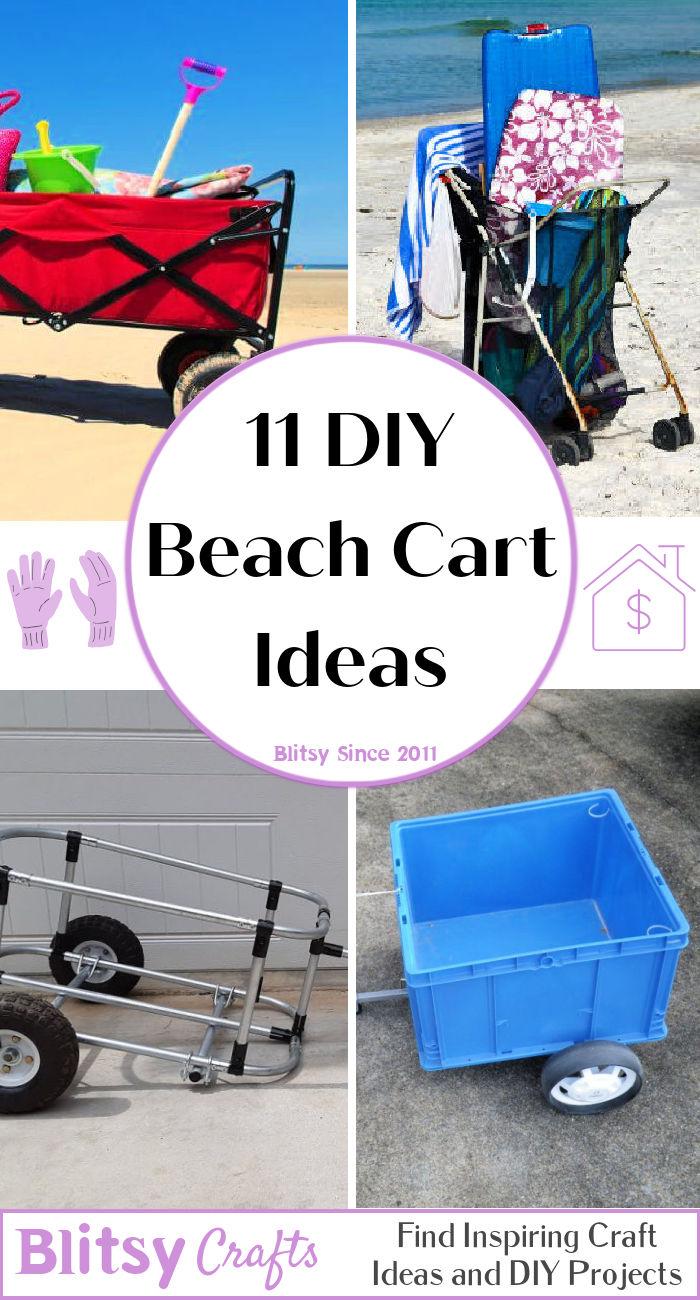
1. Homemade Handy Beach Cart
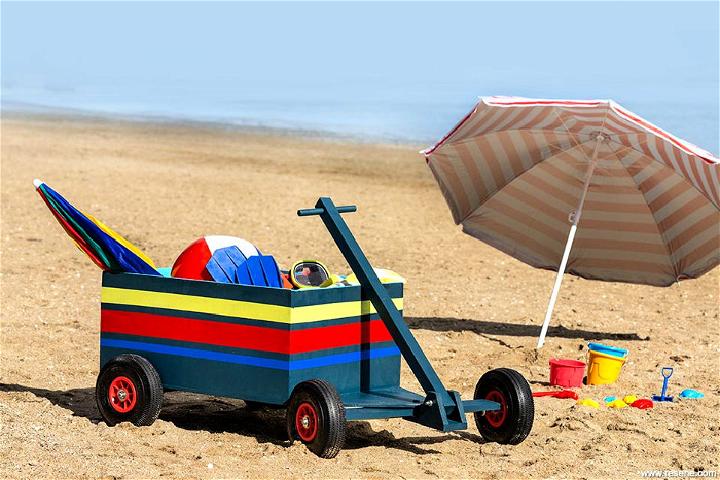
Making your own handy beach cart is like crafting your personal assistant for sandy adventures. Perfect for hauling beach gear, this DIY solution can adapt to your specific needs. With a simple design and durable materials, it makes beach days effortlessly enjoyable.
2. $50 Heavy-Duty Beach Cart Plan

The $50 heavy-duty beach cart plan is a budget-friendly project for those who love the beach but hate the hassle of carrying gears. Its robust design can withstand the salty air and sandy shores, ensuring your belongings are transported safely and efficiently.
3. How to Build a Beach Cart with Victoria
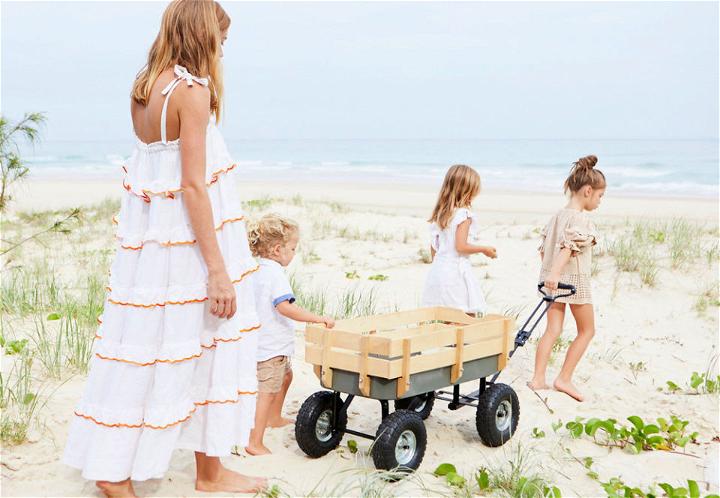
Embarking on building a beach cart with Victoria feels like catching up with an old friend. She guides you through each step with clear instructions, turning the project into a fun weekend activity. It's an enjoyable way to make a practical beach accessory.
4. DIY Beach Cart on a Budget
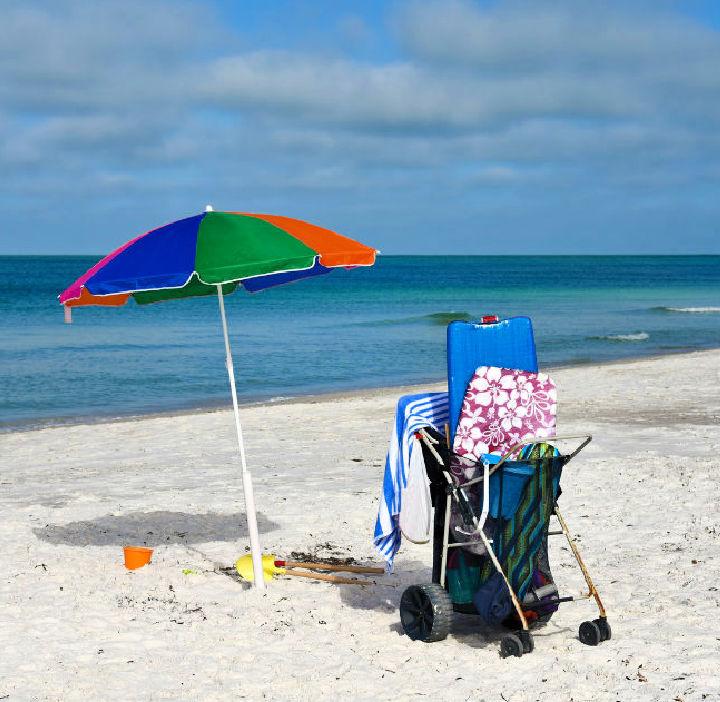
A DIY beach cart on a budget shows that creativity doesn't have to be expensive. With inexpensive materials and a bit of ingenuity, you can craft a functional cart that meets your beach-going needs without breaking the bank.
5. Homemade Beach Cart
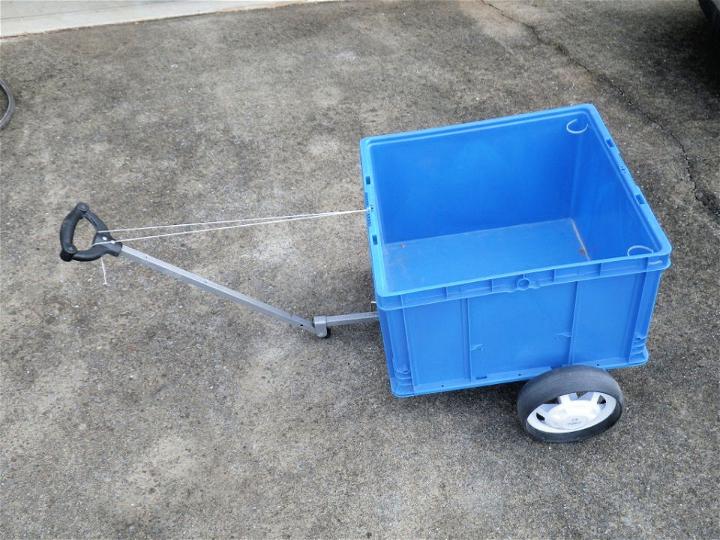
Making a homemade beach cart is a testament to ingenuity and resourcefulness. This project allows you to tailor the cart to your liking, ensuring it has all the space and features needed for a perfect day at the beach.
6. DIY 4 Wheel PVC Beach Cart
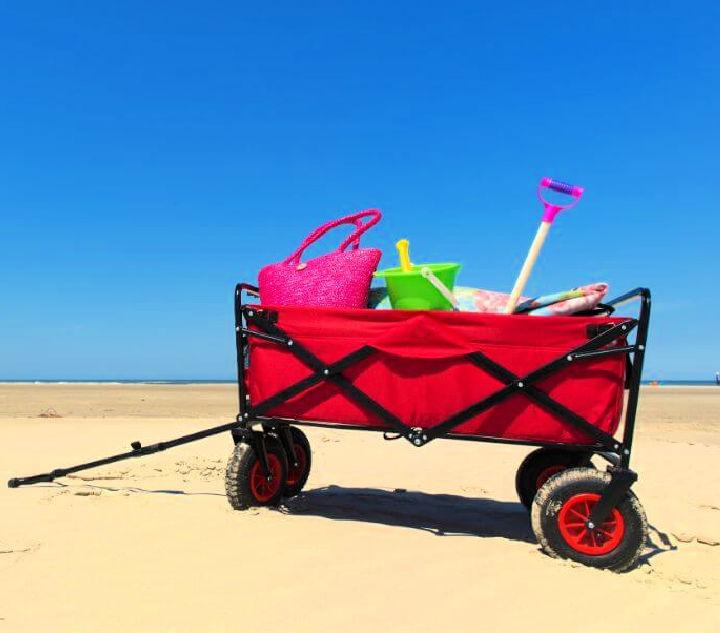
The DIY 4-wheel PVC beach cart is a lightweight, yet sturdy option for those who prefer a smooth roll over the sand. The PVC frame is not only resistant to rust but also customizable, making it a versatile choice for beach enthusiasts.
7. Best DIY Beach Cart for Surf Fishing
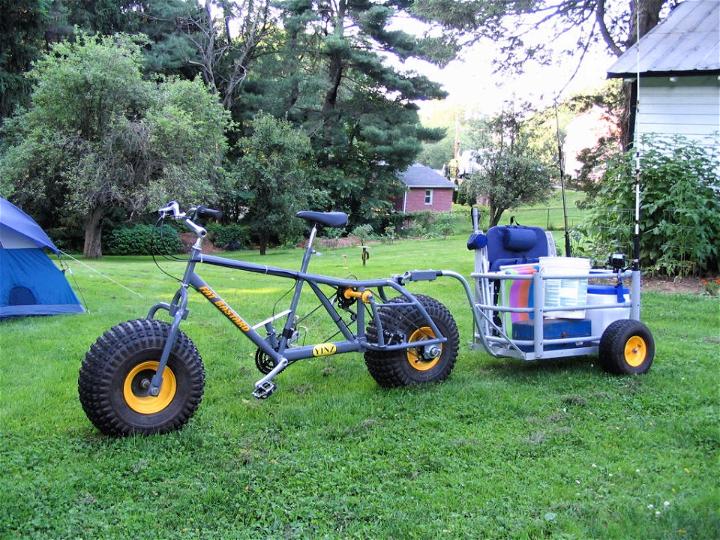
The best DIY beach cart for surf fishing is designed with the angler in mind. It has specialized compartments for rods, bait, and catches, making it an indispensable companion for any fishing trip to the shore.
8. Build Your Own Utility Wagon
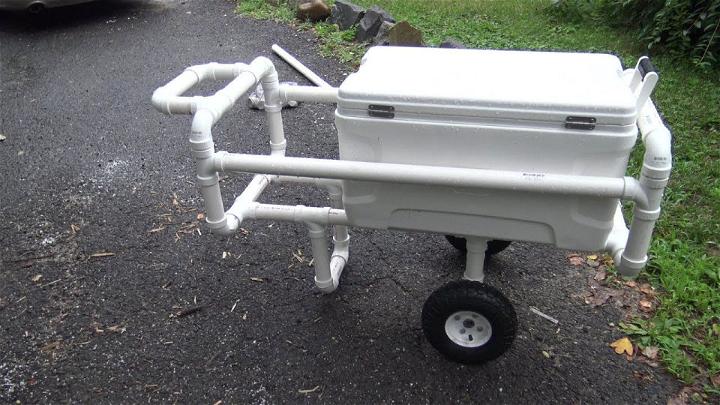
Building your own utility wagon opens a world of possibilities. This versatile wagon can be used beyond the beach, handy for gardening, shopping, and more. Its flexible design means you can tailor its size and features to any task.
9. PVC Fishing Beach Cart Design
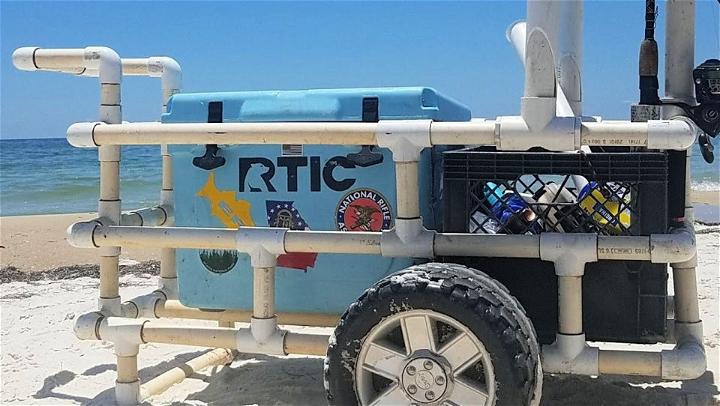
A PVC fishing beach cart design is specifically targeted at anglers looking for an easy way to transport their gear. Its lightweight frame and durable wheels make it ideal for navigating sandy beaches, with ample space for rods, coolers and tackle.
10. DIY Electric Beach Cart
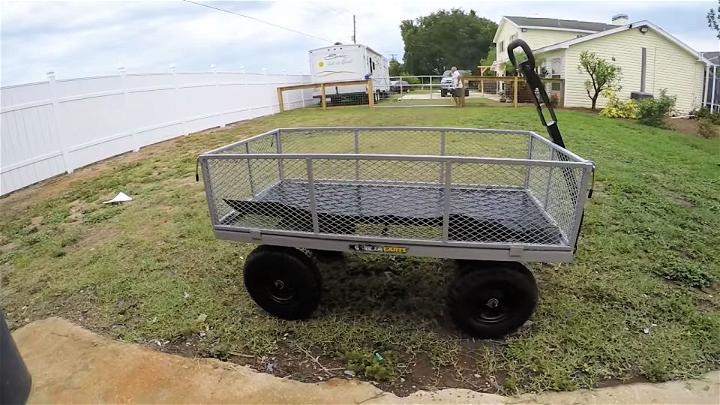
The DIY electric beach cart adds a modern twist to the traditional beach cart concept. With a motorized feature, it offers ease of transport over sandy terrains, making it a perfect option for those needing extra assistance or wanting to conserve energy for swimming and sunbathing.
11. DIY Beach or Dock Cart Using EMT Conduit
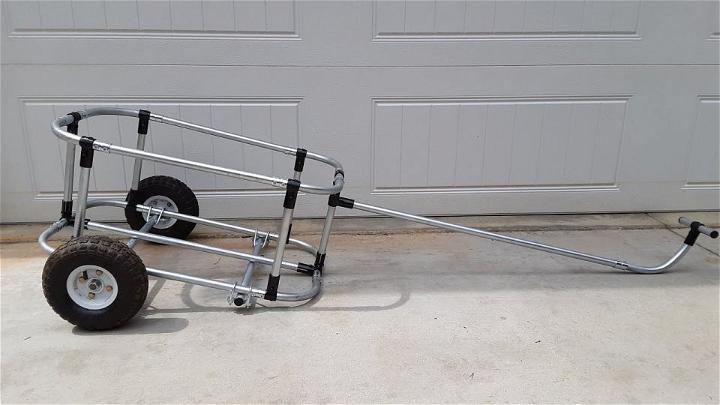
Finally, a DIY beach or dock cart using EMT conduit is an innovative approach that combines durability with flexibility. This cart is tough enough to handle the rugged beach environment while being easily customizable to fit various storage needs.
Conclusion:
In conclusion, making your own DIY beach cart can be a fun and rewarding project for beach lovers and outdoor enthusiasts alike. By following the step-by-step guide provided, you can customize your cart to fit your needs and style, making beach trips more convenient and enjoyable. Consider embarking on this DIY project to unleash your creativity and enhance your beach-going experience.


